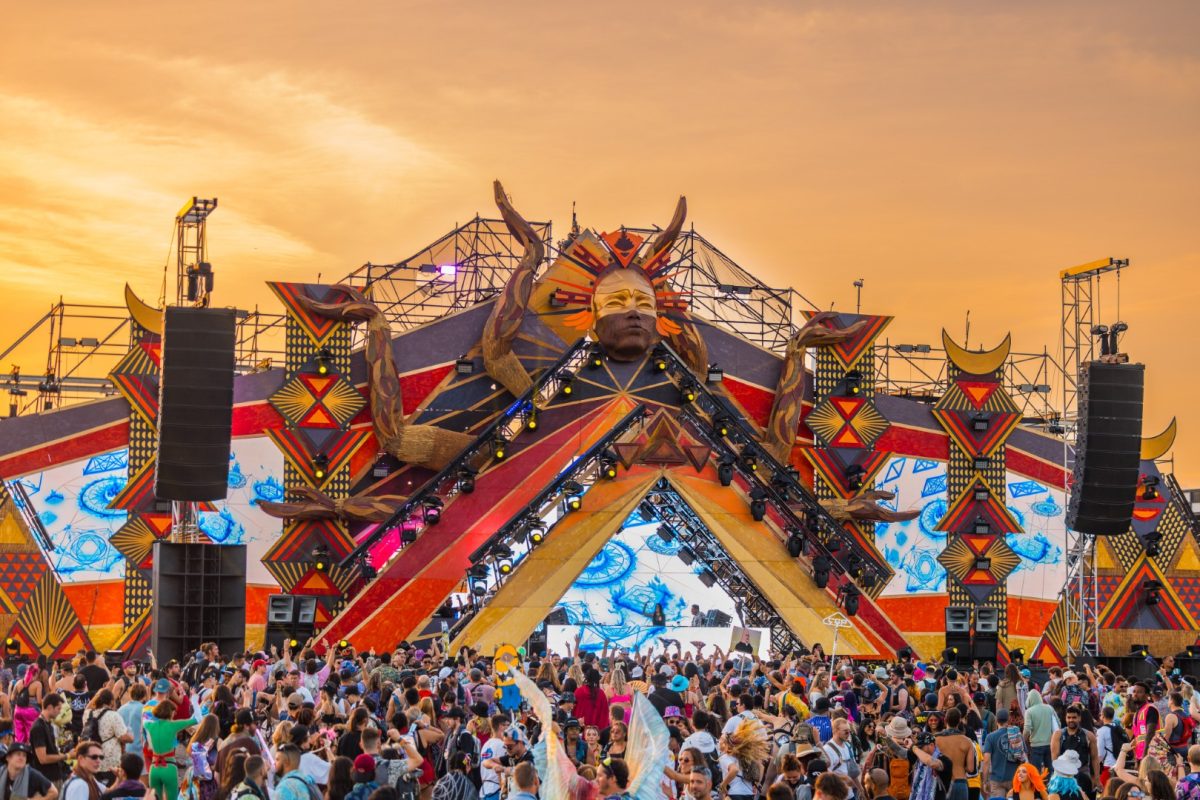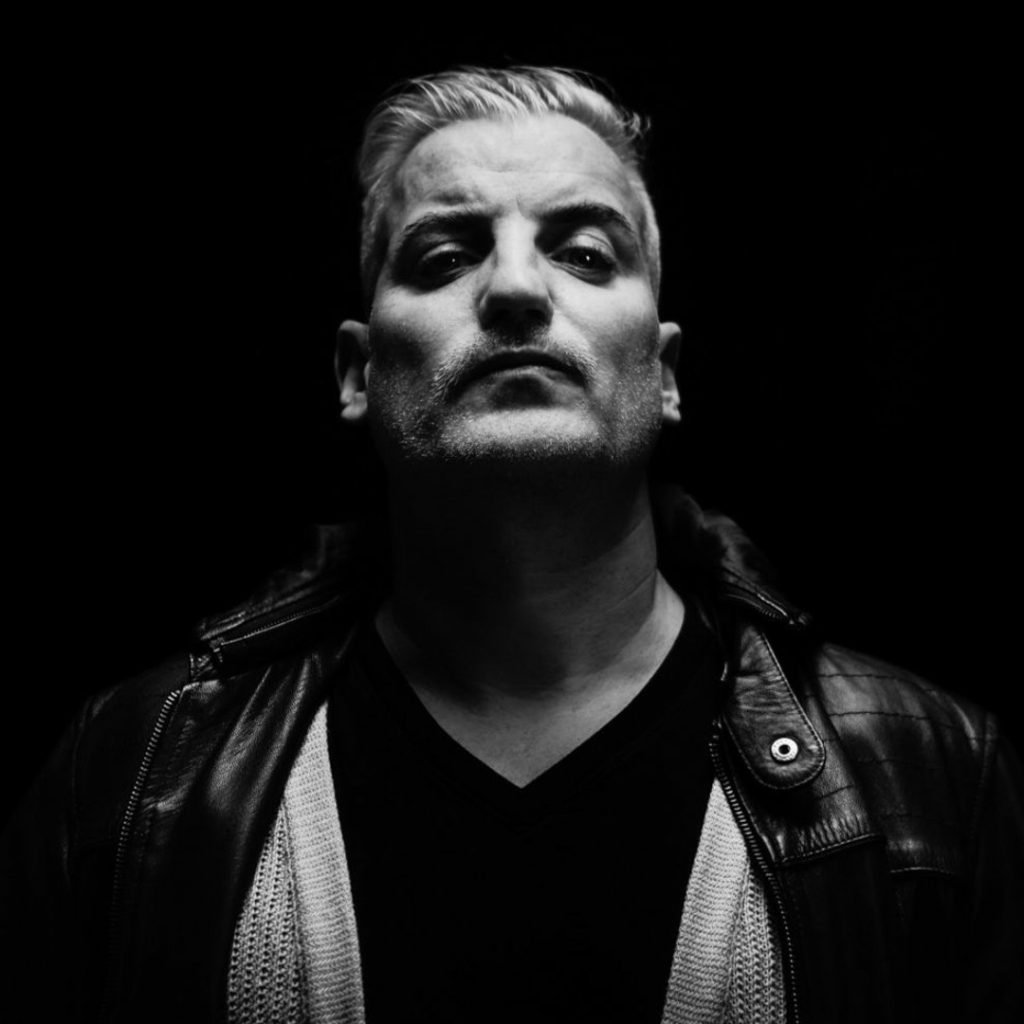
New York City Underground: A Cultural Guide Through the Eyes of Electronic Music Pioneer John Creamer
New York City’s relationship with electronic music runs deeper than most realise. While Chicago birthed house and Detroit forged techno, it was New York that gave these sounds their urban sophistication, a distinctly metropolitan edge that could only emerge from a city where art, commerce, and raw ambition collide on every corner.
The late ’80s and early ’90s marked a pivotal shift. As house music crossed state lines and underground scenes began to interconnect, New York developed its own electronic identity: deeper grooves, more soulful vocals, and an unmistakable urban refinement. The city’s club culture wasn’t merely about the music, it was about community, artistic expression, and the kind of creative energy that flourished in warehouses and basement spaces where experimentation mattered more than profit margins.
John Creamer‘s journey embodies this evolution perfectly. Arriving in the early ’90s scene, he began at Eightball Records, working his way up from the shop floor to Head of A&R at the label. This wasn’t just career progression; it was an education in the underground pulse of a city that was simultaneously gritty and glamorous.
In 1994, Creamer partnered with Konrad Carrelli to form the Butter Foundation, a groundbreaking acid jazz collaboration on Apollo/R&S Records. But it was his 1995 alliance with Stephane K that truly defined his legacy. As Creamer & K, they crafted productions and remixes for artists including Moby, New Order, iiO, Sinéad O’Connor, and Kosheen—work that helped define the sound of ’90s house music.
What made Creamer‘s approach quintessentially New York was his refusal to be confined by genre boundaries. His music reflected the city itself: deep house grooves elevated by sophisticated production, underground sensibilities with mainstream accessibility, and always that distinctive focus on vocals and rhythm. His performances became renowned for capturing what he calls New York’s “deep, sexy, underground house grooves.”
Beyond collaboration, Creamer’s entrepreneurial ventures reflected the DIY ethos that drives New York’s creative scene. Founding his NYLove imprint and launching a clothing line, he understood that being a New York artist meant being everything: creator, businessman, tastemaker, cultural ambassador. His UpAllNight brand produced club hits that gained international recognition, while recent collaborations with producers like FALFAN continue exploring new territories.
Today, as Creamer reconnects with Stephane K and continues pushing sonic boundaries, he represents both the history and future of New York’s electronic music scene. His story demonstrates how authentic artistic development happens in a city where creativity serves as both currency and calling, where the underground and mainstream share the same dance floor, and innovation builds on deep musical foundations rather than abandoning them.
The Local’s Guide to New York City’s Underground Culture
If someone lands in New York with 48 hours to explore, the first stop should be Patsy’s Pizzeria in East Harlem. Founded in 1933 by Pasquale “Patsy” Lancieri, this pioneering pizzeria represents the kind of authentic New York institution that celebrities like Frank Sinatra frequented long before the city became a global tourist destination.
While multiple locations now exist across the boroughs, the original Patsy’s holds legendary status as one of NYC’s earliest pizzerias, offering old-fashioned, southern-Italian pizza that connects you directly to the city’s immigrant roots and working-class soul.
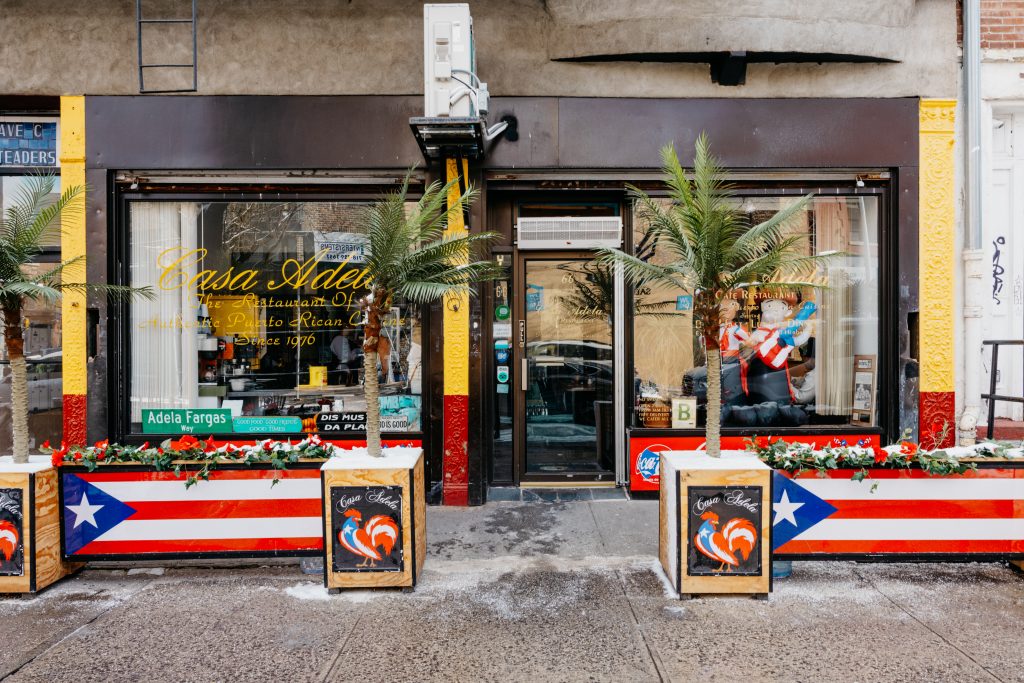
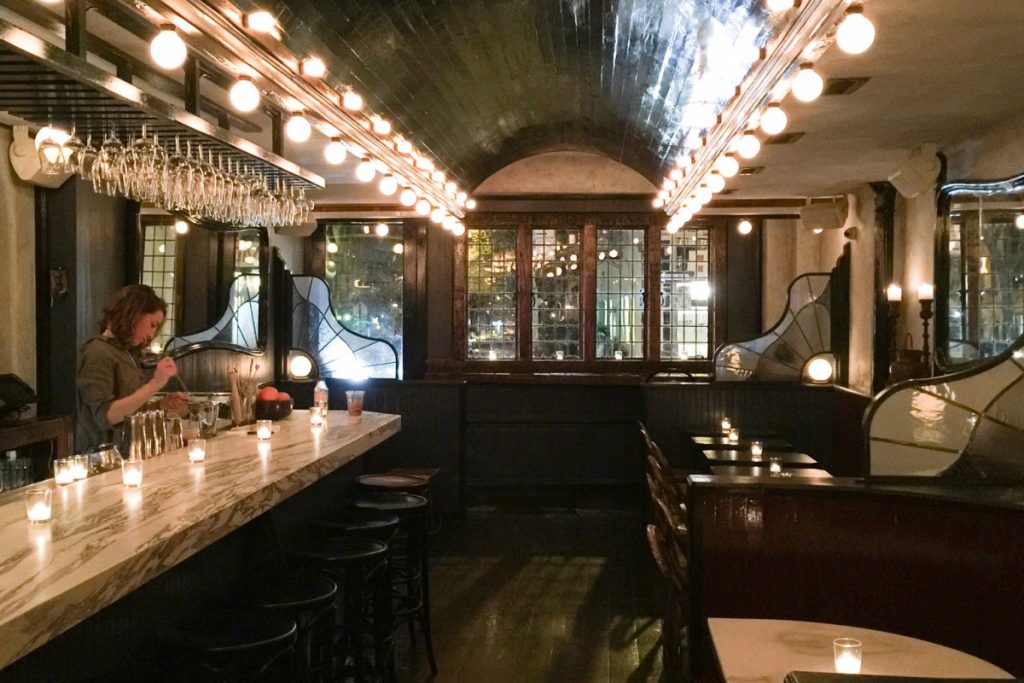
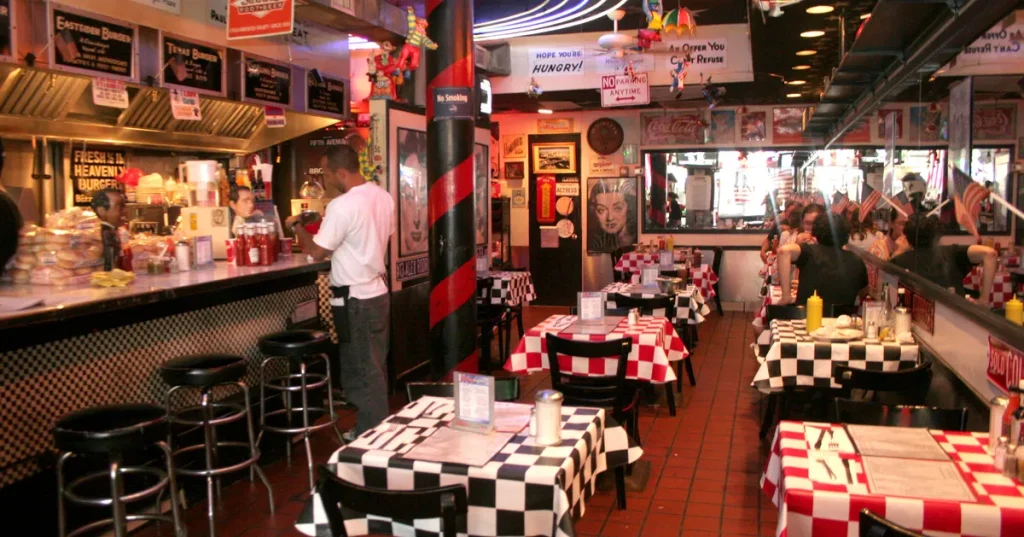
The restaurants genuinely pushing boundaries right now speak to the city’s evolving palate and attitude.
June (https://www.junebk.com/) in Brooklyn’s Cobble Hill stands as the borough’s first natural wine bar, established in 2015 with a European sensibility that pairs old-world natural wines, particularly French selections with extensive orange, rosé, and sparkling options, with locally sourced, seasonal small plates in an intimate, cozy setting.
Paul’s Da Burger Joint (https://paulsburgersnyc.com/) in the East Village offers a different kind of revolution: pure, unapologetic nostalgia executed perfectly. This cash-only, family-owned spot, established in 1989 and still run by Paul’s family, serves large, juicy burgers in a kitschy 1950s atmosphere complete with checkered tablecloths and vintage decorations. It’s the kind of “home away from home” that attracts loyal customers precisely because it refuses to change.
Casa Adela (https://casa-adela.foodjoyy.com/) represents the neighborhood institution at its finest, a small, cash-only Puerto Rican restaurant in Alphabet City that has been serving affordable, authentic home-style cuisine since 1976. Founded by Adela Fargas and now run by her son Luis, this no-frills space feels like eating in someone’s home, complete with tropical ambiance, Puerto Rican flags, and the kind of genuine hospitality that defines New York’s diverse cultural fabric.
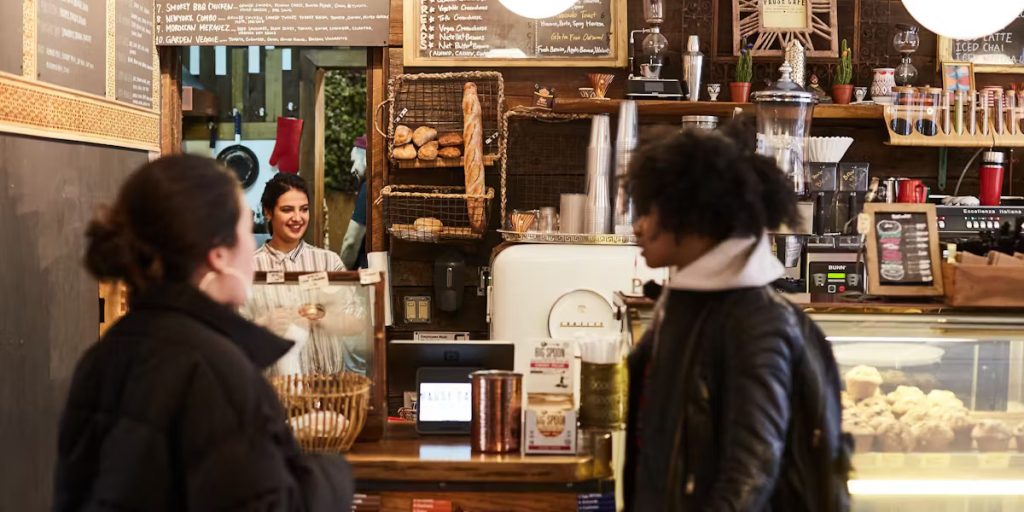
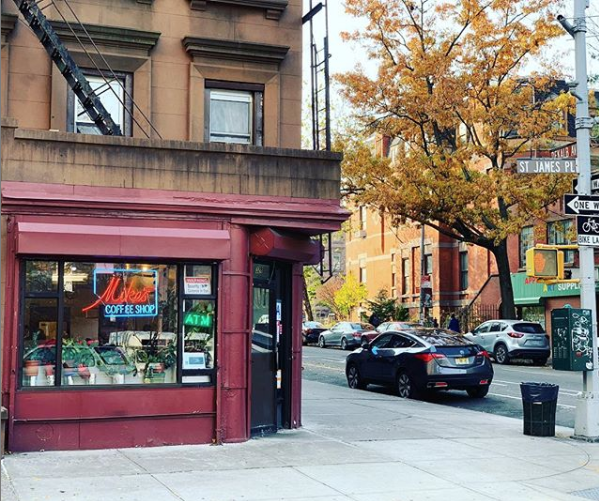
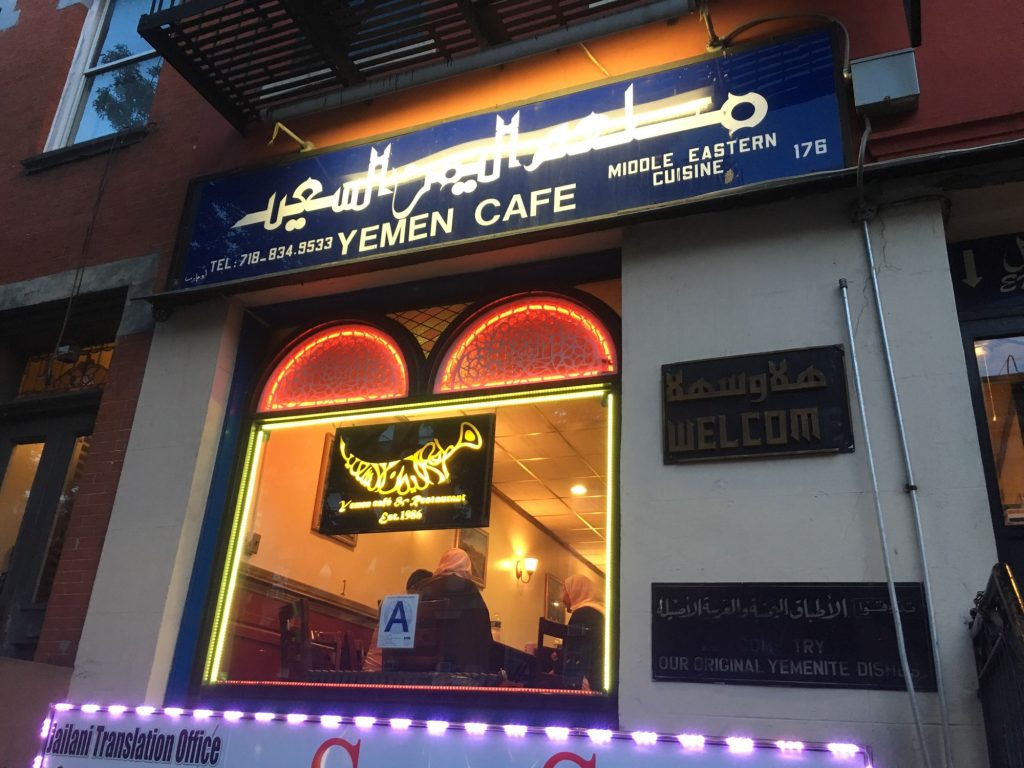
Caffeine Culture: Where Creativity Percolates
The cafés fueling the city’s creative pulse understand that coffee culture is about more than caffeine, it’s about providing spaces where ideas can develop and communities can form.
Mike’s Coffee Shop in Brooklyn serves as the quintessential neighborhood gathering place, particularly beloved by Pratt students and locals for its classic comfort food, affordable prices, and buzzing, energetic atmosphere. With flavorful coffee and bottomless refills in true diner fashion, it’s the kind of place where you might overhear art students planning their next exhibition or producers working through creative challenges.
Yemen Cafe on Atlantic Avenue offers a different kind of creative fuel. This family-owned restaurant, one of the first Yemeni establishments in the United States when it opened in 1986, provides generous portions of authentic cuisine alongside unlimited Yemeni tea and freshly baked flatbread from a clay oven. The welcoming atmosphere makes it ideal for extended conversations and collaborative planning sessions.
Pause Cafe in the Lower East Side was designed specifically as a neighborhood living room. Opened in 2011 by Moroccan owner Amine Sadki, its Moroccan-accented décor with ambient lighting and pillows creates the kind of laid-back, intimate environment where gallery curators might plan their next show or musicians might debug their latest compositions.

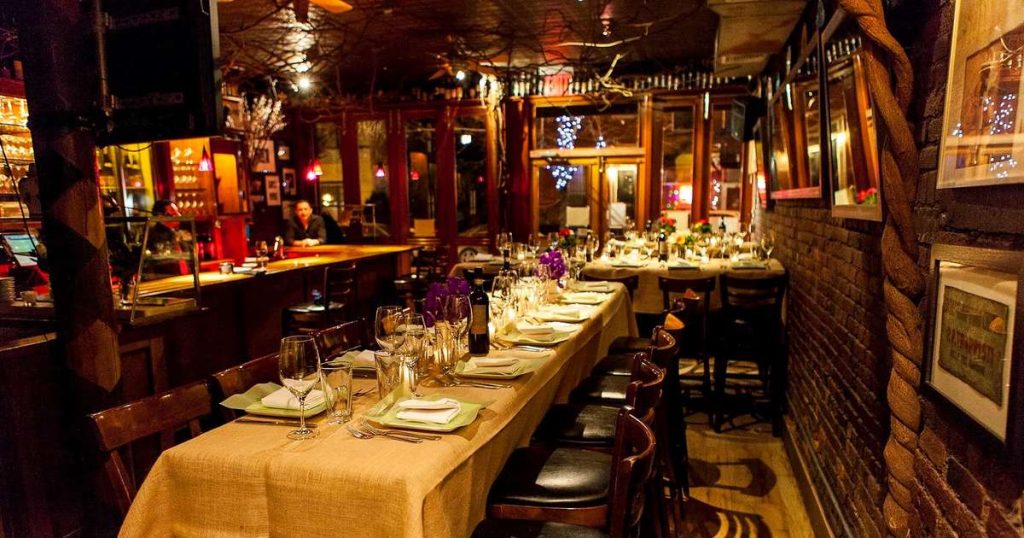
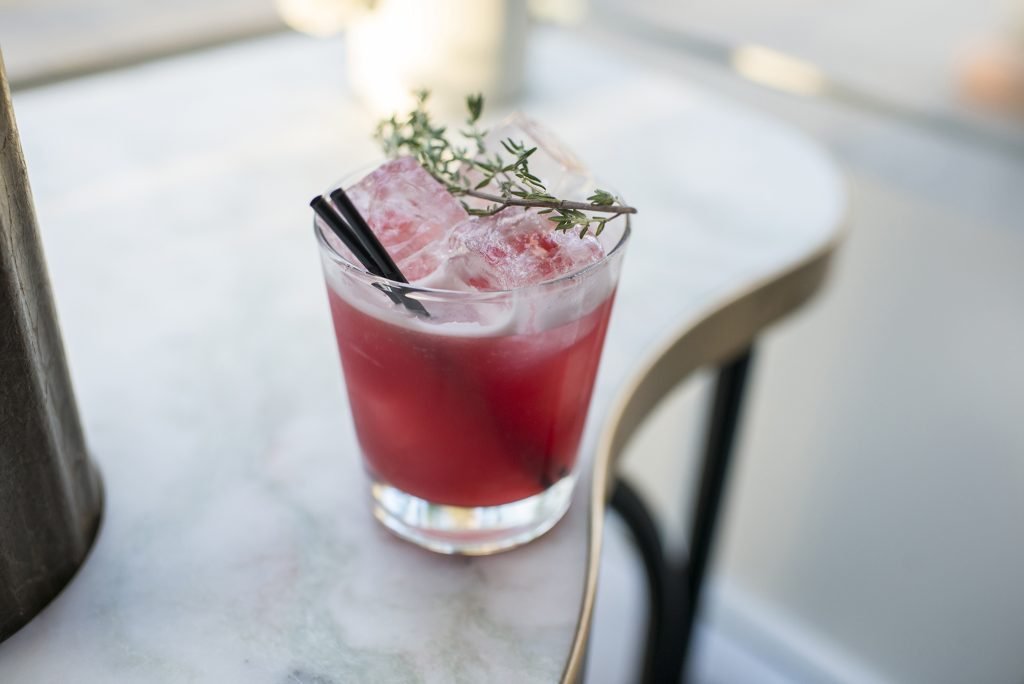
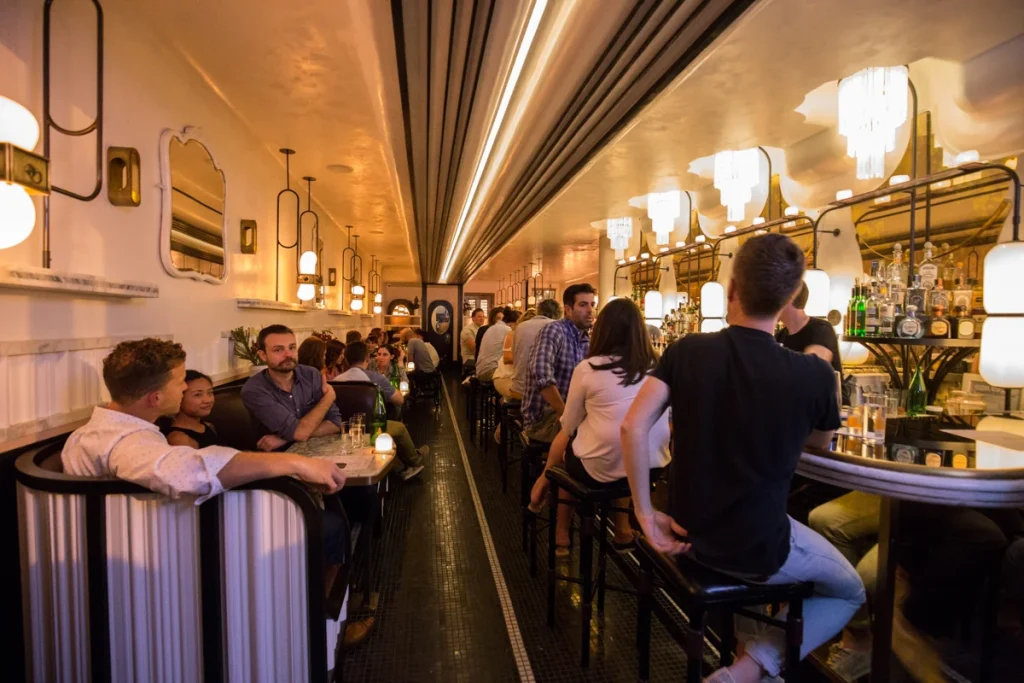
Beyond the Bar: Complete Sensory Experiences
The bars that transcend mere drinking understand that atmosphere, music, and community are equally important ingredients.
Elsa was a sophisticated cocktail destination in Brooklyn’s Cobble Hill/Brooklyn Heights area, featuring custom-made bar tops, curved banquettes, a back patio, and the kind of carefully curated design touches (like a vintage Singer sewing machine converted into a beer tap) that created memorable experiences.
Il Posto Accanto on East 2nd Street lives up to its name—”the place next door”—by offering the kind of cozy, rustic Italian wine bar atmosphere where the playlist feels as carefully selected as the daily specials based on fresh market finds. The brick walls and authentic high-quality Italian food create an environment where conversation flows as smoothly as the wine.
The Odeon in Tribeca represents the iconic New York establishment that has maintained its relevance across decades. With its Art Deco façade, glowing neon sign, and vintage interior that evokes a cozy, old-school diner, it serves classic French-American cuisine while offering brunch, cocktails, and late-night food—the kind of all-hours flexibility that defines New York dining culture.
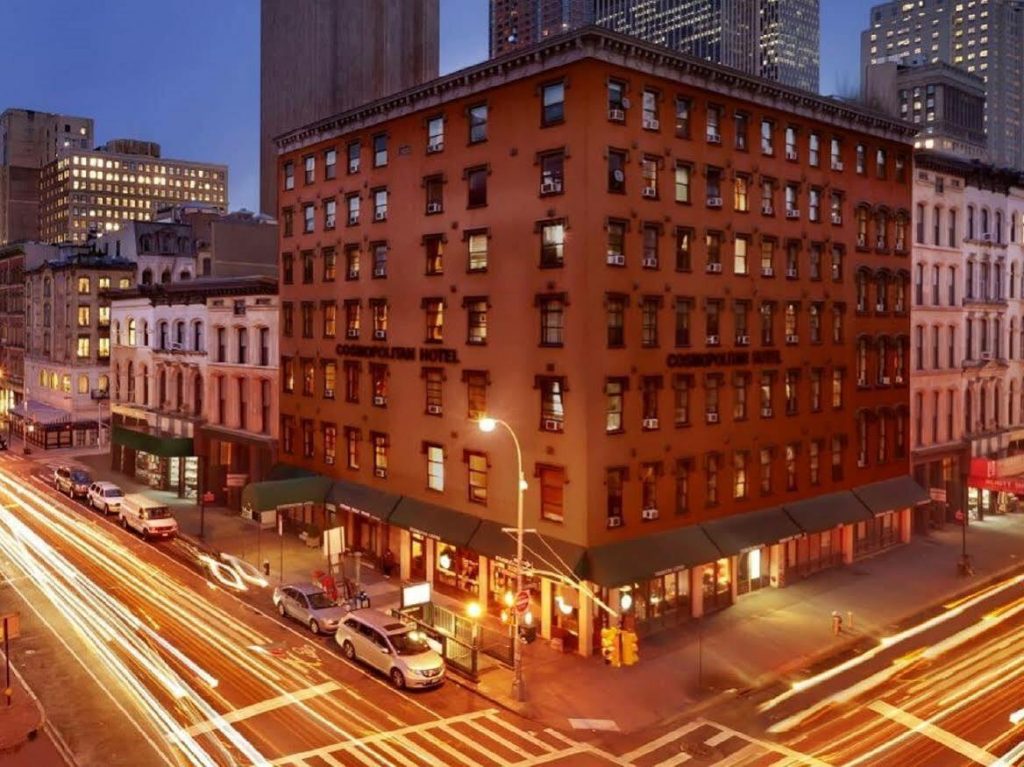
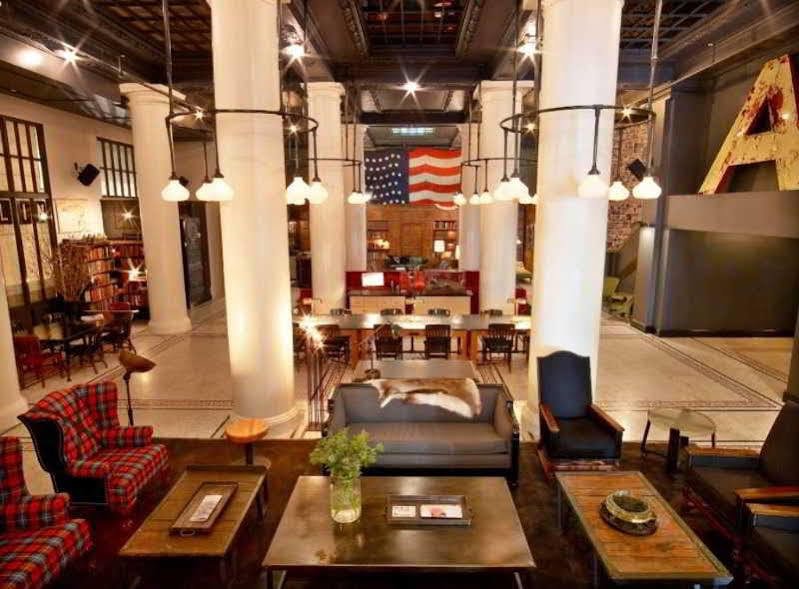
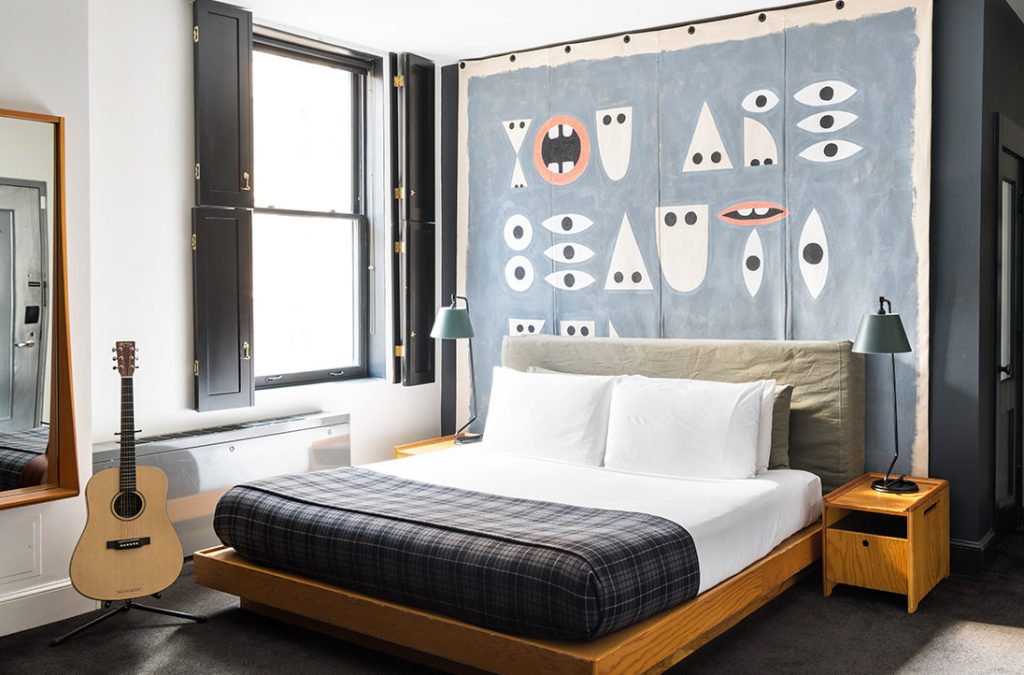
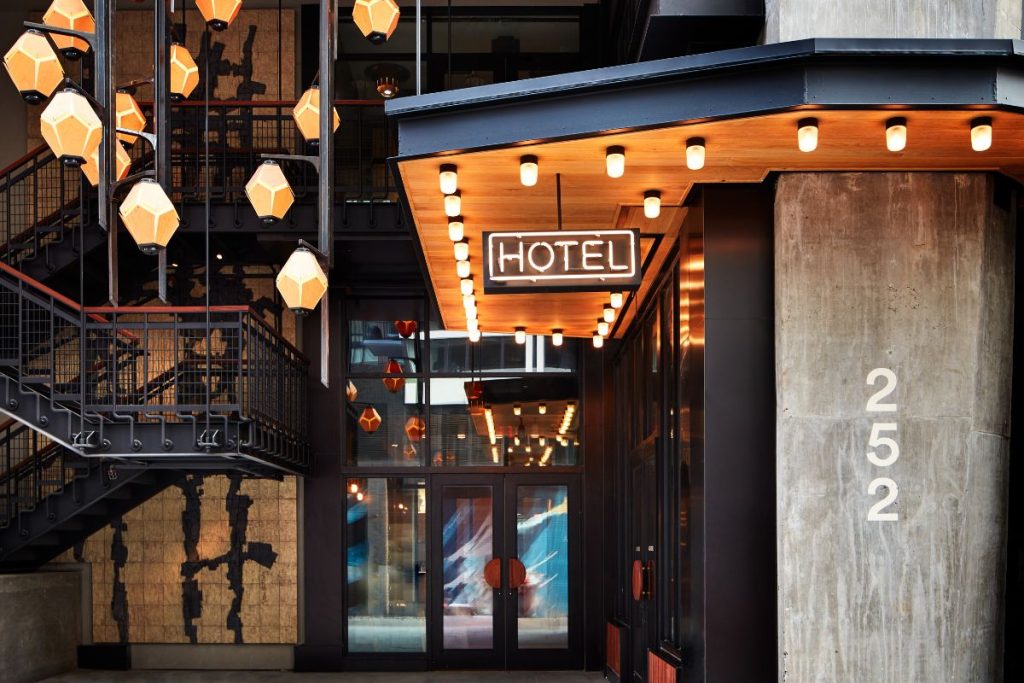
Accommodation: Cultural Immersion
For accommodations that reflect local culture and subcultural scenes;
The Ace Hotel New York stands out as a genuine cultural hub. Located in a repurposed historic building (the original Hotel Breslin), it features individually designed rooms with vintage and custom furniture, in-room turntables, and Stumptown Coffee Roasters. The lobby serves as a co-working space and live music venue, while Koloman provides dining, creating the kind of environment where cultural exchange happens organically.
The Ace Hotel Brooklyn in Boerum Hill functions as an even more targeted cultural destination, hosting an artist residency program that directly supports the creative community. Other notable options include;
The Whyte Hotel in Williamsburg, combining historic charm with modern design, and;
The Fredrick Hotel in Tribeca, housed in a circa-1838 Gothic Revival building that puts guests in the heart of one of the city’s most dynamic neighborhoods.
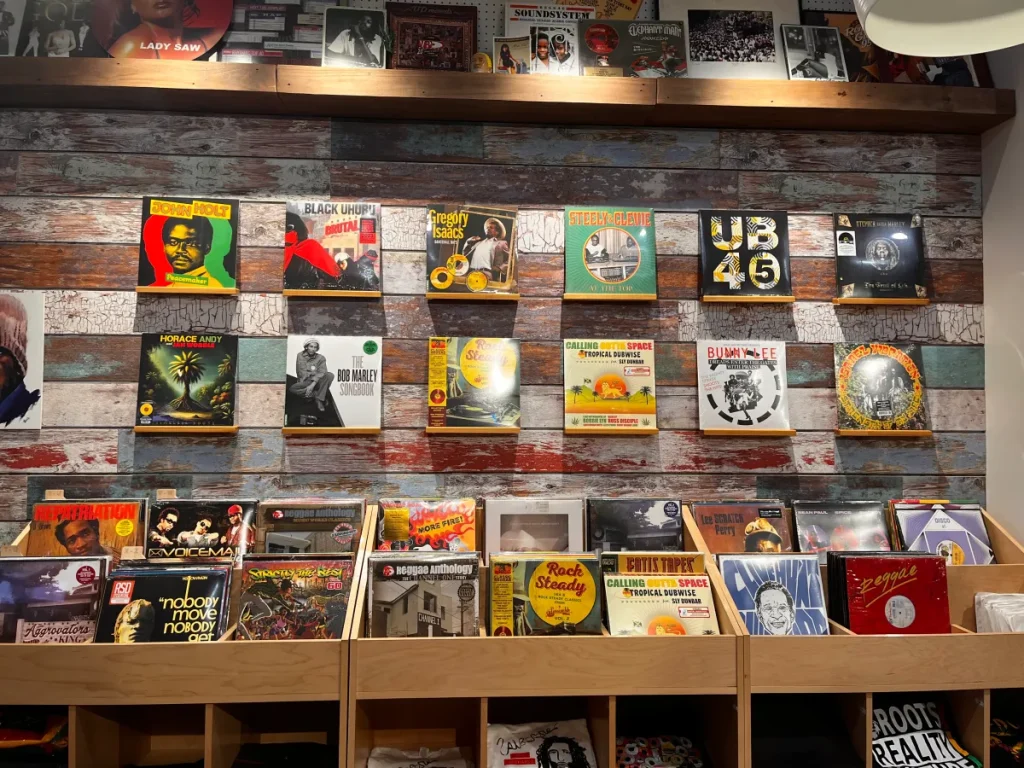
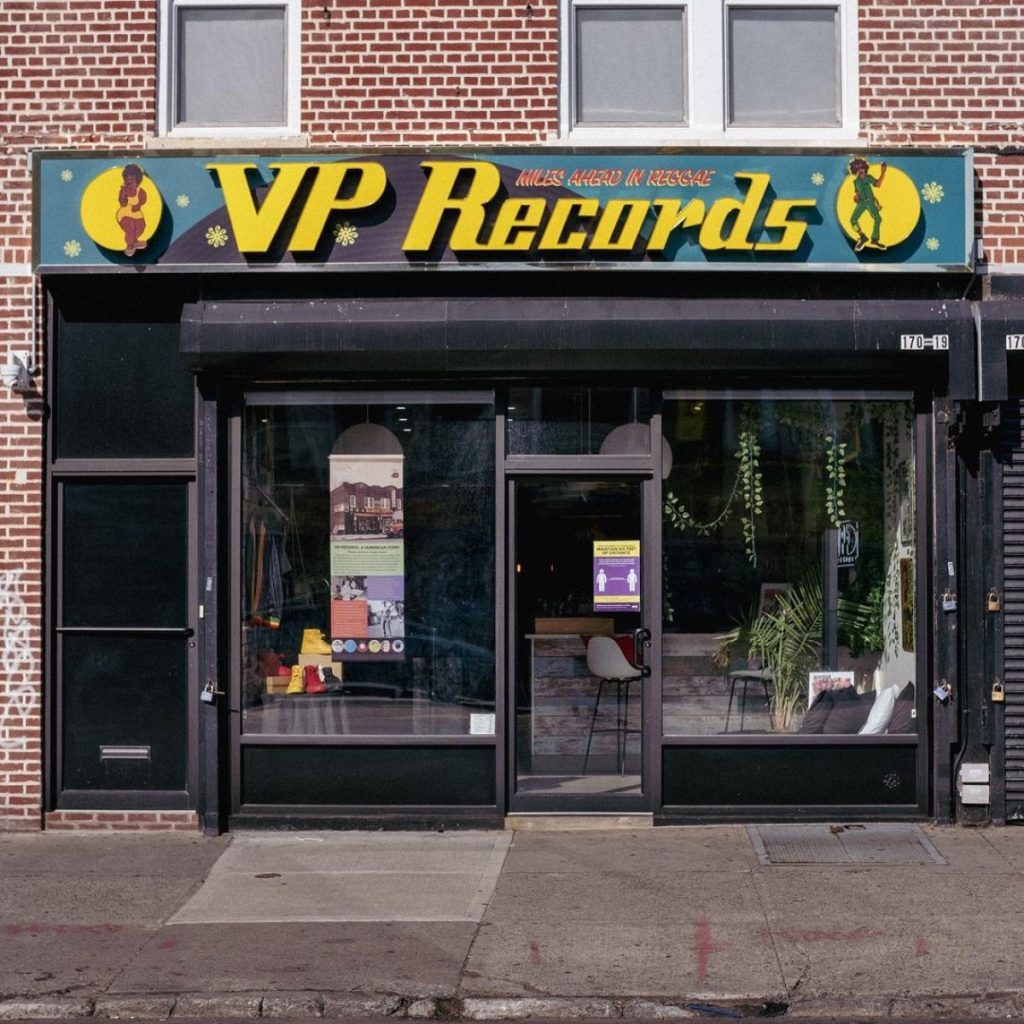
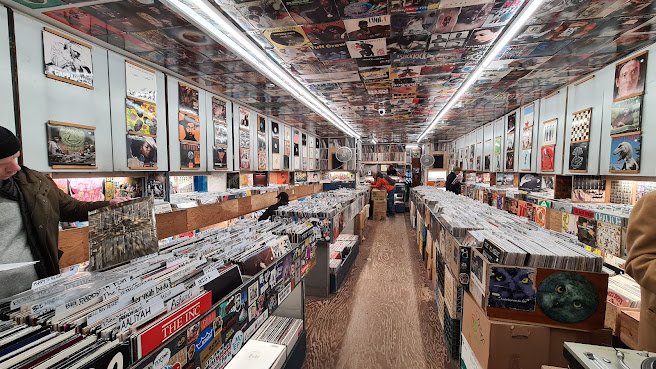
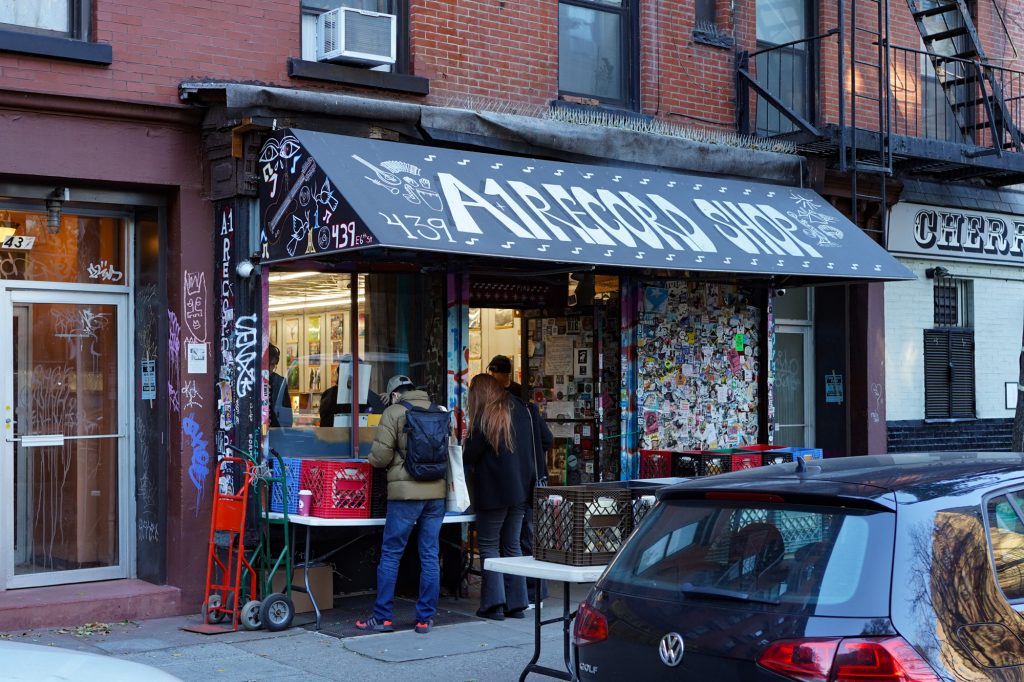
Vinyl Culture: Analog Heartbeats
The record stores still flying the flag for analog culture understand that vinyl collecting is about discovery, community, and preserving musical history.
Rock and Soul, a legendary family-owned institution since 1975, has deep roots in hip-hop and DJ culture, celebrating its 50th anniversary in 2025 while continuing to serve as a hub for music enthusiasts and DJs seeking rare finds and essential equipment.
VP Records represents the global reach of New York’s music scene, beginning as a retail store in Brooklyn in the 1970s when founders Vincent and Patricia Chin emigrated from Kingston, Jamaica. As the world’s largest independent reggae label with New York roots, it demonstrates how the city’s immigrant communities have shaped its musical landscape.
A-1 Record Shop in the East Village, opened in 1996 by Isaac Kosman, specializes in the kind of carefully curated vintage and used vinyl across hip-hop, disco, funk, soul, house, techno, jazz, and rock that makes it a destination for DJs and collectors seeking both rare finds and essential 12-inch singles.

Underground Club Culture
The venue doing it right in terms of maintaining authentic underground experience is exemplified by events like 718 Sessions, a long-running monthly dance party specializing in soulful house, disco, and related genres. Originally named for the Brooklyn area code where it started, it represents the kind of community-focused event that prioritizes music and atmosphere over Instagram moments.
Transportation: Local Movement
For international visitors, the best approach is landing at JFK, taking the AirTrain to Jamaica Avenue station, then the LIRR to Penn Station in Manhattan. Madison Square Garden provides a useful landmark for orientation. Avoid taxis unless you enjoy sitting in traffic. The subway system, while complex, offers the most authentic New York experience and the fastest way to move around the city once you understand its logic.
Emerging Sounds
The Carry Nation, the duo of queer DJs and producers Nita Aviance and Will Automagic, represents the future of New York’s underground scene. Their parties, often held at venues like Brooklyn’s Good Room, feature extended sets mixing genres while drawing from queer underground culture, demonstrating how the city’s electronic music continues to evolve while honoring its diverse roots.
Cultural Architects
The promoters and crews who have shaped the scene include;
Eli Escobar, whose two decades in electronic music have established him as a dance music great with an unparalleled record collection and productions that guide listeners from past to future.
Christian Bruna has been a notable figure in NYC’s electronic scene since the early 1990s, working across Drum & Bass, House, and Hardcore genres.
Benny Soto serves as a driving force behind major nightlife institutions and legendary parties, particularly the influential 718 events that have shaped the city’s house, techno, and underground music culture.
Interestingly, New York’s sound could be defined by the “Capleton sound”, the commanding, gravelly voice of reggae artist Capleton (Clifton George Bailey III), known as “The Fireman.” This represents a powerful blend of militant Rastafarian consciousness, pulsating dancehall energy, and soulful roots reggae rhythms, with the recurring “fire” theme symbolizing spiritual purification and the burning of injustice. This choice reflects New York’s Caribbean influences and the way the city’s sound incorporates global elements.
Culinary Identity
Two quintessential New York experiences define the city’s food culture: the classic pizza slice and the bacon, egg, and cheese sandwich (BEC) on an untoasted hero. For pizza, legendary spots like Joe’s Pizza or Bleecker Street Pizza represent the standard, but for a proper BEC, the best experience comes from your nearest local corner deli or bodega, because this is ultimately about neighborhood pride and personal preference, not tourist destinations.

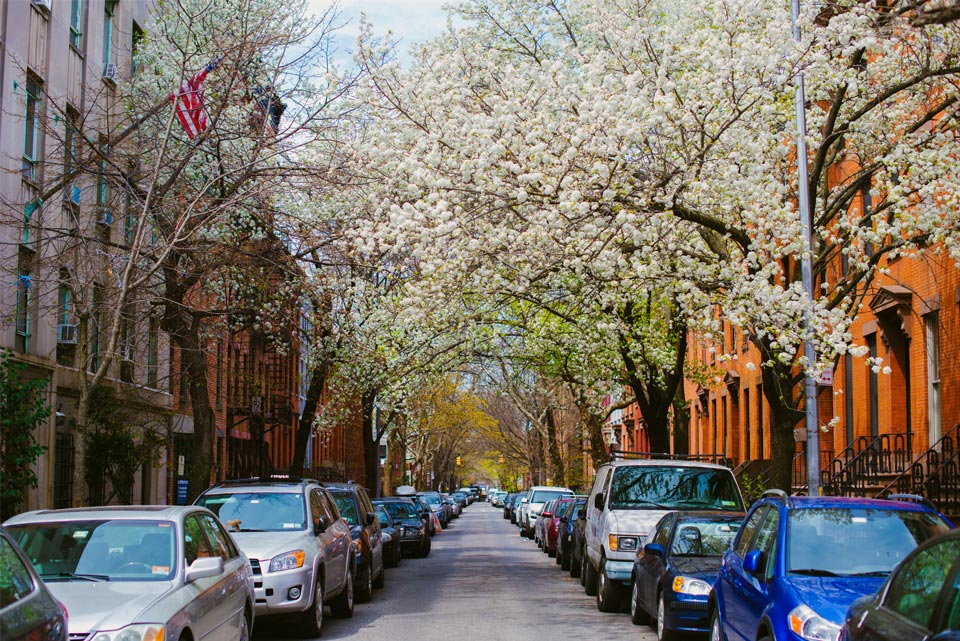
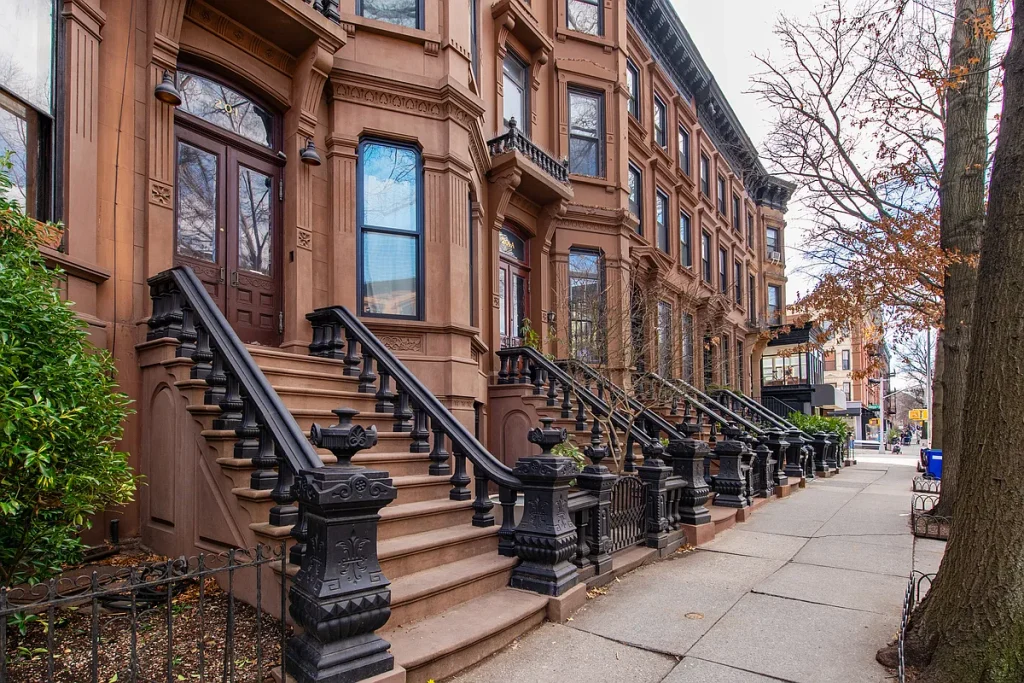
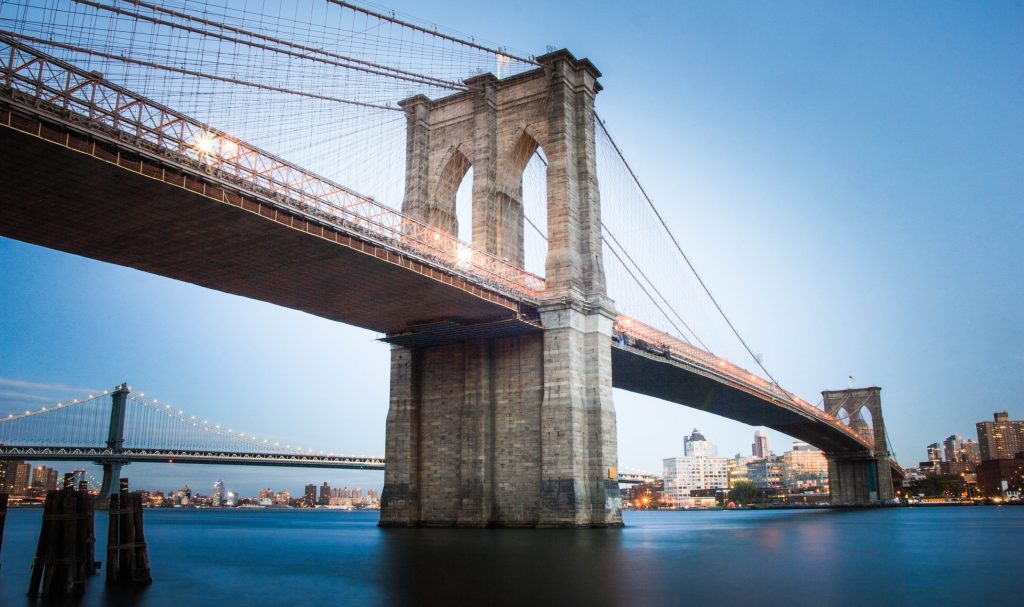
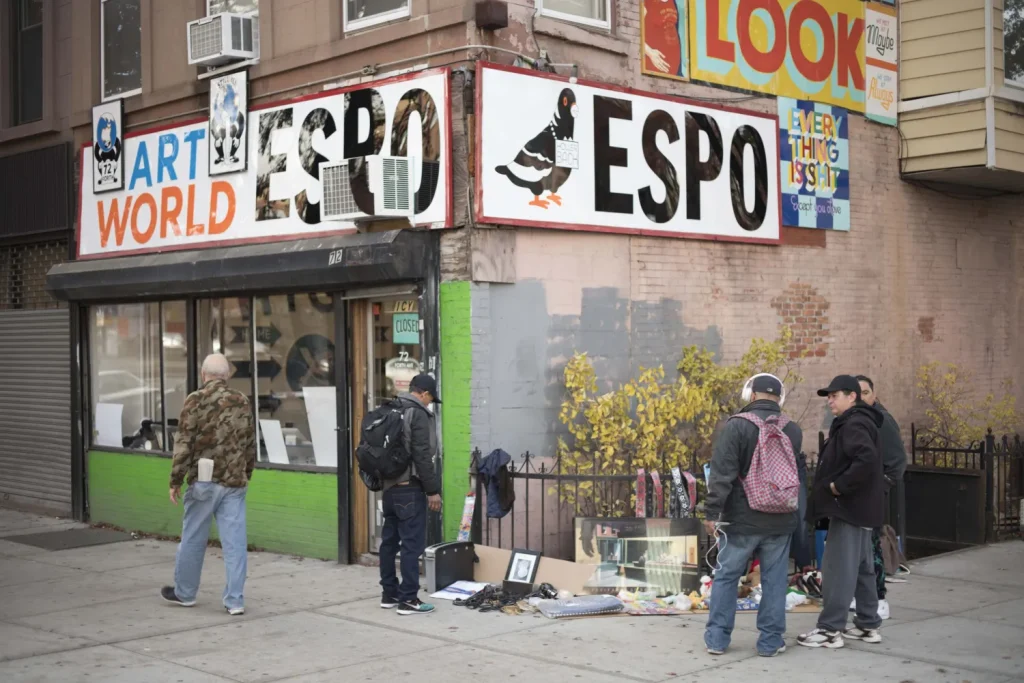
Fashion Underground
ESPO’s Art World (https://www.instagram.com/esposartworld) represented the kind of community-focused creative space that supports local talent and subcultural aesthetics. Established by artist Stephen Powers (ESPO) in 2012 in Brooklyn, it served as both art studio and public space selling prints, canvases, and merchandise directly to the community. While the Boerum Hill location closed in 2023, the concept continues with ESPOKYO in Tokyo, demonstrating how New York’s creative energy extends globally while maintaining local roots.
The ultimate insider tip: after walking across the Brooklyn Bridge, take a right at the end to discover Cobble Hill. This historic and affluent residential neighborhood represents the “Brownstone Belt” of Brooklyn with its beautiful 19th-century architecture, tree-lined streets, and tranquil, family-friendly atmosphere. Designated a historic district to preserve its vintage character, Cobble Hill offers the kind of authentic New York neighborhood experience that feels both timeless and perfectly integrated into the city’s contemporary cultural fabric.
This is New York as seen through the lens of someone who has spent decades not just living in the city, but helping to create its soundtrack, a place where underground culture and mainstream success coexist, where authenticity matters more than hype, and where the next great sound is always being born in a basement, a bodega, or a Brooklyn warehouse.
Related
Discover more from Decoded Magazine
Subscribe to get the latest posts sent to your email.



